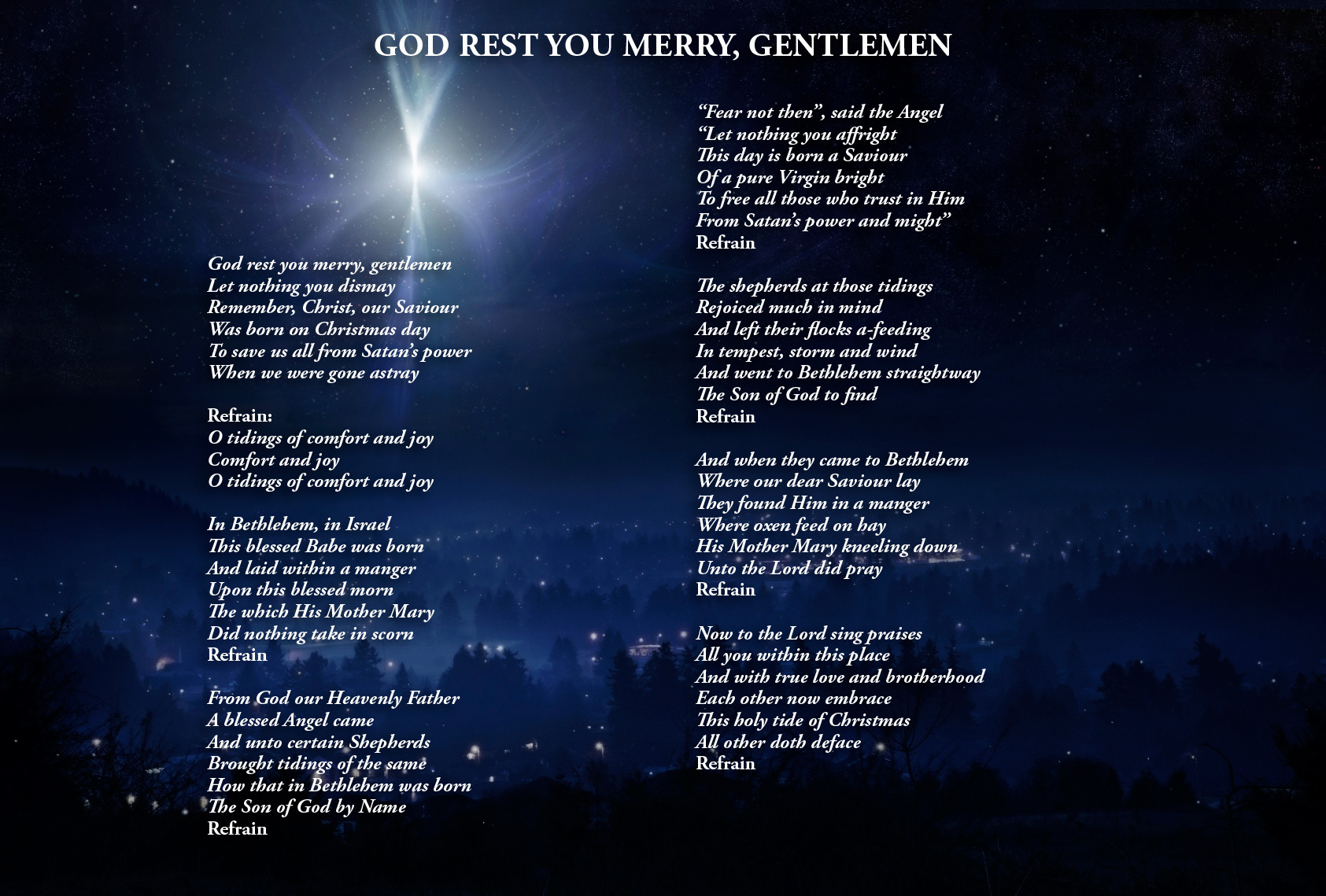
Several months ago we published a blog about how to do hymn studies with your children. This month we wanted to show you how to apply hymn studies to a popular Christmas carol, “God Rest You Merry, Gentlemen.” This carol is a great one to study with your children, because it follows a passage of Scripture and requires them to discover the meaning of some obscure words.
The History
“God Rest You Merry, Gentlemen” is a traditional English Christmas carol. It’s one of our oldest carols, dating from the 16th century or earlier. Though the author is anonymous, the first known printed edition of the carol was around 1760. We know that it was a familiar carol by the 19th century as Dickens quotes it in A Christmas Carol.
The Title
The title, coming from the first line of the carol, has lost its original meaning over the centuries. Many people and hymnbooks mistakenly think the carol is saying, “God rest you, merry gentlemen.” Actually, the phrase is “God rest you merry,” which is an expression we no longer use. According to the Oxford English Dictionary, the phrase originally meant “may God grant you peace and happiness.” The song begins by asking that God give us peace and joy.
Some variant versions use “God rest ye” instead of “God rest you.” “Ye” is always used as a subject and not an object. This common misunderstanding is called a pseudo-archaism, because “ye” would have never been the correct usage but it sounds like it is just an older way of saying “you.”
 What does it mean?
What does it mean?
Once you’ve talked about the history and the meaning of the title, you can talk about the stanzas and what they mean. Here are some questions and discussion suggestions that can help guide your carol study with your children.
Stanza 1
- Who is “gentlemen” referring to?
- Line 2 says we shouldn’t be dismayed, or discouraged, by anything. Why?
- How often should we remember the story of Christmas?
- Why was Christ born? What will He save us from?
The Refrain
The refrain that appears at the end of each stanza summarizes the message of Christmas. It may appear simple and repetitive at first but there is a lot of significance behind the simplicity.
- What is the word “tidings” (an announcement of an event) referring to?
- How does the refrain echo the message of the angels in Luke 2:10 and Isaiah 40:1?
- Why do you think that the author chose to repeat “comfort and joy” at the end of each stanza? How is the story of Christmas comforting and joyful?
Stanzas 2–6
The middle stanzas follow the narrative of Luke 2. Look at the verses in Luke 2 and have your kids match lines in the stanzas to sections of the passage in Luke.
- Stanza 2: Jesus is born to Mary and Joseph in a manger (Luke 2:1–7).
- Stanzas 3–4: The angels announce Jesus’ birth to the shepherds (Luke 2:8–14).
- Stanzas 5–6: The shepherds run to see Jesus, and then they rejoice and tell others about His birth (Luke 2:15–20).
Stanza 7
- What does the carol tell us to do in the last verse?
- What are the similarities between the actions Christians are called to do and how the shepherds responded to the message of the angels?
- Why is embracing others with love and brotherhood an important part of Christmas?
Hopefully, this carol study helps give you ideas for doing your own carol studies with your children. Many traditional carols are full of truths, but some richness is sometimes lost as language changes. Also, we become so familiar with the songs that we don’t think about what we’re singing. Set aside time this holiday season to slow down and think about the words of these great carols. This practice can be a great spiritual encouragement for us and our children.
Leave a Reply